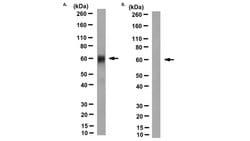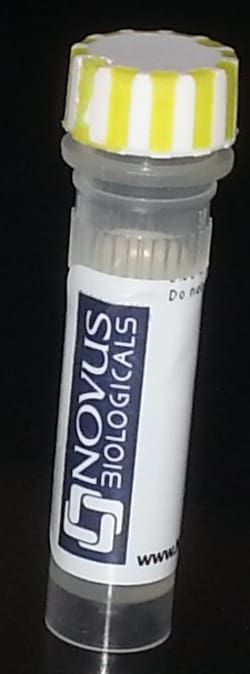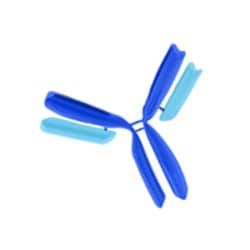GHRH (Somatoliberin), Sheep anti-Mouse, Rat, Polyclonal, Millipore Sigma™
Manufacturer: MilliporeSigma
Select a Size
| Pack Size | SKU | Availability | Price |
|---|---|---|---|
| Each of 1 | ABN99325UL-Each-of-1 | In Stock | ₹ 17,118.26 |
ABN99325UL - Each of 1
In Stock
Quantity
1
Base Price: ₹ 17,118.26
GST (18%): ₹ 3,081.287
Total Price: ₹ 20,199.547
Antigen
GHRH (Somatoliberin)
Classification
Polyclonal
Dilution
Radioimmunoassay Analysis: A representative lot detected GHRH (Somatoliberin) in Radioimmunoassay applications (Tannenbaum, G.S., et. al. (1990). Endocrinology. 127(6):3087-95). Immunohistochemistry Analysis: A representative lot detected GHRH (Somatoliberin) in Immunohistochemistry applications (Tannenbaum, G.S., et. al. (1990). Endocrinology. 127(5):2551-60; Epelbaum, J., et. al. (1989). J Neuroendocrinol . 1(2):109-15). Immunofluorescence Analysis: A representative lot detected GHRH (Somatoliberin) in Immunofluorescence applications (Epelbaum, J., et. al. (2009). J Neurosci . 29(25):8198-205).
Gene Alias
Somatoliberin;Growth hormone-releasing factor;GRF;Growth hormone-releasing hormone
Host Species
Sheep
Molecular Weight of Antigen
12.2 kDa calculated.
Quantity
25 μL
Research Discipline
Neuroscience
Test Specificity
This sheep polyclonal antibody detects somatolierin (GHRH) in mouse and rat brain sections. It targets an epitope within the first 29 amino acids.
Content And Storage
Stable for 1 year at -20°C from date of receipt.
Applications
Immunofluorescence, Immunohistochemistry (Paraffin), Radioimmune Assays (RIA)
Conjugate
Unconjugated
Formulation
Sheep polyclonal antiserum with 0.01% sodium azide.
Gene Symbols
Ghrh
Immunogen
BSA-conjugated synthetic linear peptide corresponding to the first 29 amino acids from rat Somatoliberin (GHRH).
Purification Method
Unpurified
Regulatory Status
RUO
Primary or Secondary
Primary
Target Species
Mouse, Rat
Isotype
IgG
Description
- Anti-GHRH (Somatoliberin) Antibody, Cat
- No
- ABN993, is a highly specific sheep polyclonal antibody that targets Somatoliberin (GHRH) and has been tested in Immunofluorescence, Immunohistochemistry (Paraffin), and Radioimmunoassay
- Somatoliberin (UniProt: P09916; also known as Growth hormone-releasing factor, GRF, Growth hormone-releasing hormone, GHRH) is encoded by the Ghrh gene (Gene ID: 29446) in rat
- GHRH F is released by the hypothalamus and acts on the adenohypophyse to stimulate the secretion of growth hormone
- The release of growth hormone from pituitary gland depends of the interplay between the stimulatory action of GHRH and inhibitory action of somatotropin release inhibiting factor (SRiF) or somatostatin
- These two neurohormones are shown to be released in a reciprocal manner from the median eminence into the portal circulation and result in ultradian rhythmic release pattern of growth hormone.
- Post-translational removal of the signal peptide (aa 1-19) and the two propeptide sequences (aa 20-30) and aa 75-104) releases the 43 aa mature Somatoliberin (aa 31-73), which functions as a ligand to stimulate growth hormone (GH) release from the pituitary
- Variant receptors for GHRH have been found in several types of tumors, and antagonists of these receptors are shown to block the growth of the tumors
- Defects in Ghrh gene are a known to cause of dwarfism, while hypersecretion of the encoded GHRH can lead to gigantism.







